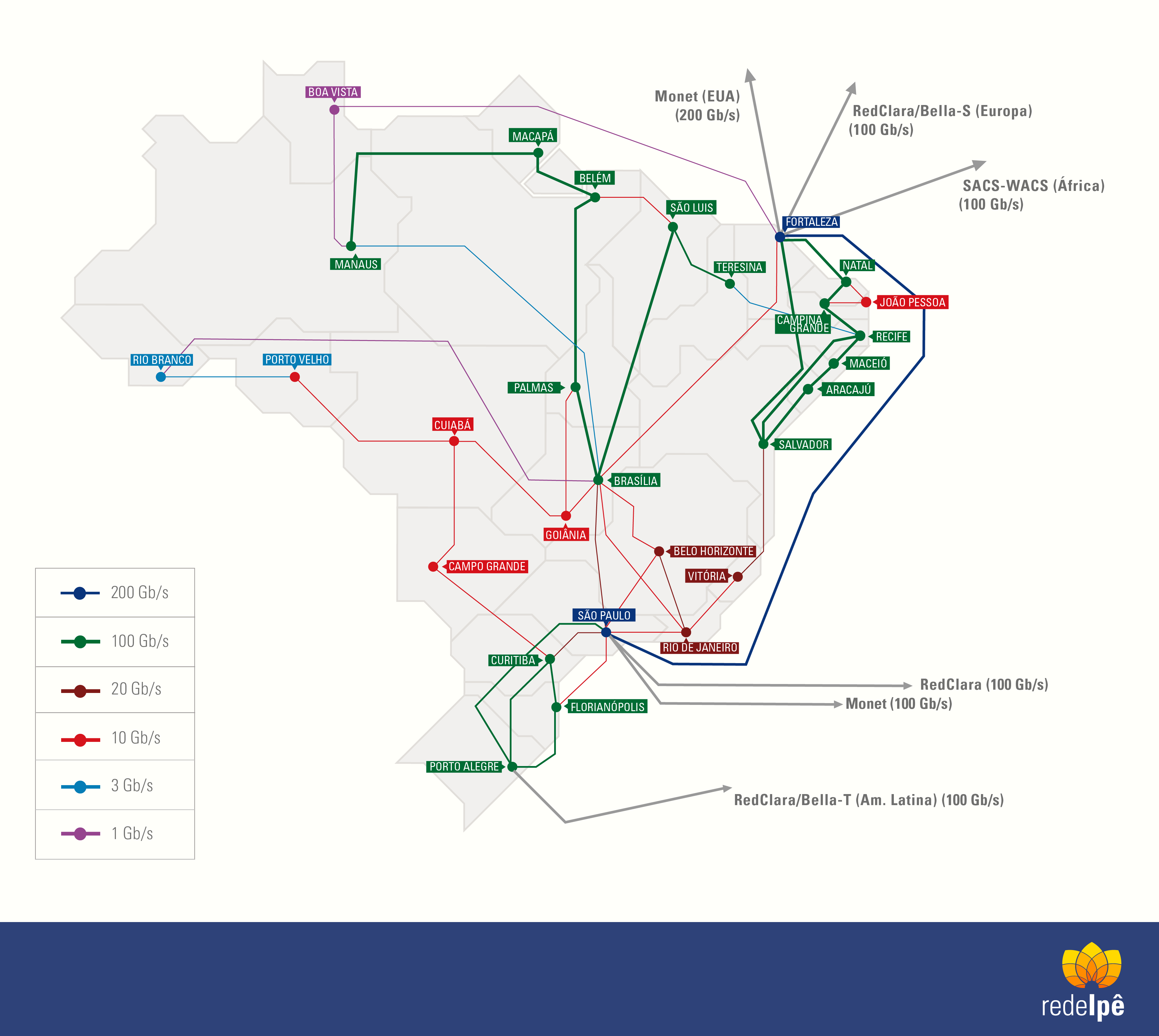The Evolution of the Internet in Brazil
The country's first Internet network will be 30 years old in 2022 and continues to evolve to this day, to serve the education, research and innovation ecosystem in Brazil. In 1992, the holding of Rio-92, the United Nations Conference on Environment and Development, in Rio de Janeiro, made it possible for RNP, until then a project of the Ministry of Science and Technology (MCT), to have the role of creating an Internet infrastructure for the event.
From this first connection, the first Internet network in Brazil emerged, connecting ten states and the Federal District. In other words, at first, Internet access was for academic purposes, so that Brazilian researchers could be connected with each other and with their international peers.
The evolution of the network
The first Brazilian academic network, in 1992, had a capacity of 64 Kb/s. To give you an idea, it made possible to receive text messages, emails, transfer files (with a little patience) and access websites that were not very complex.
The opening of the commercial Internet would only come three years later, in May 1995. According to the book “Banda Larga no Brasil” (Broadband in Brazil), in the chapters signed by network scientist Michael Stanton, the period was one of effervescence in the telecommunications sector. RNP, which was previously dedicated to raising awareness among the academic community, underwent a redefinition of its role, extending its Internet access services to all sectors of society.
In 1995, the network expanded to other capitals and, for the first time, had connections of up to 2 Mbps, including international circuits to the USA with links in São Paulo and Brasília.
In 1999, ten years after the creation of the RNP project, the Ministries of Science and Technology (MCT) and Education (MEC) invested in taking the academic network to a new level. The RNP2 backbone, the first advanced network infrastructure capable of meeting the new bandwidth and service needs for teaching and research, was officially opened in May 2000.
In 2005, the technology of the academic network, which came to be called the Ipê network, was updated from telephone lines to a purely optical connection, operating at multiple gigabits. Its opening was marked by a telematic dance show, from the Federal University of Bahia (UFBA), broadcast from other cities.
In 2011, the Ipê network underwent another great qualitative leap, reaching an aggregate capacity of 213.2 Gb/s, a 244% increase in comparison to the previous aggregate capacity. This expansion was the result of a technical cooperation agreement signed between RNP and the telecommunications company Oi.
As of 2010, the network operated by RNP has evolved on several fronts. In terms of access networks, the Veredas Novas initiative increased the network's capillarity in institutions located in the countryside. The number of connections also grew, in 2019, more than 1,000 locations were reached in the country. The Ipê network also increased the capacity of its connections, especially in the North region.
In 2020, the main innovation is the new generation of the Ipê network, in partnership with power companies, to share infrastructure.
See the evolution maps of the Ipê network
What lays ahead
In 30 years, the Brazilian network for education and research has reached all units of the federation, connecting more than 800 universities, educational and cultural institutes, research agencies, teaching hospitals, parks and technology centers, benefiting more than 4 million users. It is a very high performance network with unlimited growth potential, capable of achieving high transmission rates, up to 1,000 times faster than domestic broadband Internet.
“It is designed to be abundant, that is, to guarantee not only the necessary speed for Internet traffic, but also for the traffic of advanced applications and scientific projects, and for the experimentation of new technologies”, says the Director General of RNP, Nelson Simões.
Some advanced applications that the Ipê network supports: Internet of Things; next-generation wireless networks (5G and beyond); cloud and fog computing; Big data; Blockchain; Artificial intelligence; Cybersecurity; Smart cities, among others.
It is also connected to other education and research networks in Latin America, North America, Africa, Europe, Asia and Oceania through terrestrial and submarine fiber optic cables.
